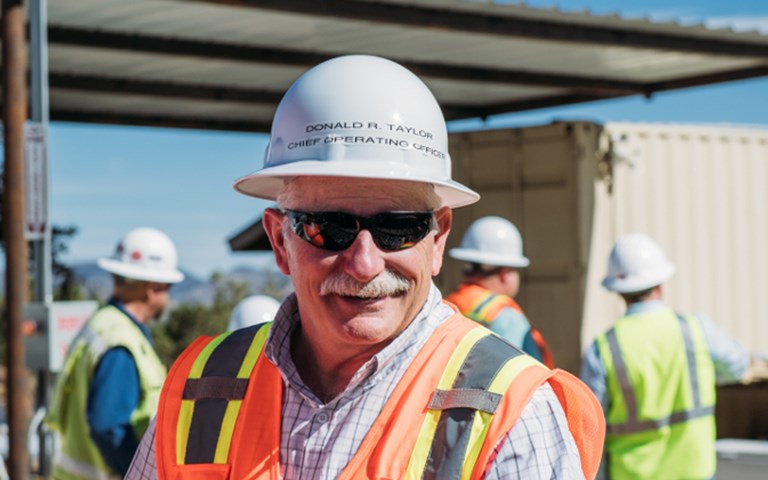Don Taylor, chief operating officer of Arizona Mining. Courtesy of Arizona Mining
When Don Taylor took the helm of Arizona Mining eight years ago, he hoped to satisfy a nagging entrepreneurial urge. He ended up discovering one of the largest lead-zinc deposits in the world.
“I had been working for large cap companies and was looking for something a little more entrepreneurial, an opportunity that had some upside. Wildcat Silver (as Arizona Mining was known at the time) fit the bill,” said Taylor, the 2018 recipient of PDAC’s Thayer Lindsley Award for best global discovery.
The eponymous Taylor deposit, discovered in 2014 south of Tucson, Arizona, is a carbonate replacement deposit with a Measured and Indicated Resource of more than 100 million short tons (about 90 million metric tonnes) grading 4.1 per cent zinc, 4.3 per cent lead and 2.1 ounces per ton silver. Arizona is currently driving a twin exploration decline into Taylor and expects to deliver a feasibility study in the third quarter of 2018 in preparation for production as early as 2020.
The deposit caught the eye of Australian miner South32 Limited, which announced plans to acquire Arizona for US$1.3 billion in mid-June. In a press release, South32 CEO Graham Kerr affirmed the quality of the deposit, calling it “one of the most exciting base metal projects in the industry.” South32 previously owned 17 per cent of Arizona Mining.
When Taylor was appointed president in 2010 after exiting his role as vice-president of exploration for Doe Run, the junior was focused on expanding and developing a silver-manganese manto oxide deposit closer to surface. But after compiling airborne geophysics and some regional drill results from the 1970s, Taylor devised a drill program to test the possibility of sulphide mineralization a few hundred metres down dip of the oxide zone.
Related: PwC Canada’s national mining leader says Canadian mining companies investing more sustainably in growth in current upswing
“There wasn’t any one reason, but several small indicators that made a compelling argument to drill,” Taylor said. “We planned five holes, but it was a difficult time to raise money and we didn’t have much in the bank. I’m not sure if he got tired of listening to the story or started to believe it, but our executive chairman Richard Warke relented and put up his own money to drill the holes.”
Taylor studied geology in Missouri, culminating in a master’s degree from the University of Missouri at Rolla in 1983. The Midwestern state is known for its carbonate replacement – also known as Mississippi Valley Type – lead-zinc deposits, so Taylor understood the significance of the find when the first hole he drilled returned coarse-grained galena and sphalerite in altered limestone.
He stepped down as president – replaced by former Barrick Gold co-president Jim Gowans – in order to focus his attention on drilling out Taylor and a related zone, Taylor Deeps. Four years later, the zones continue to grow and high-grade copper is showing up in the some of the latest cores.
Taylor says the host stratigraphy extends to the south and northeast and there is “tremendous” potential to find another deposit. Although drilling to date has been limited to patented claims, Arizona is in the process of securing permits with the United States Forest Service to drill its unpatented claims, where another 78 targets have been delineated.
“I’ve been lucky to be involved in the expansion or discovery of three or four blind deposits in my career,” said Taylor, “but nothing on this scale.”
Discover more of our 2018 Names to Know




